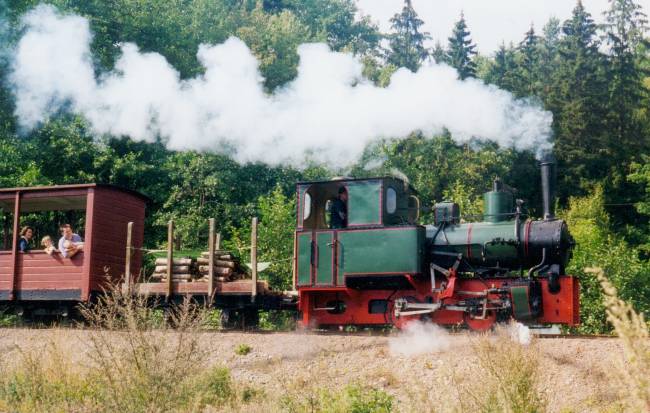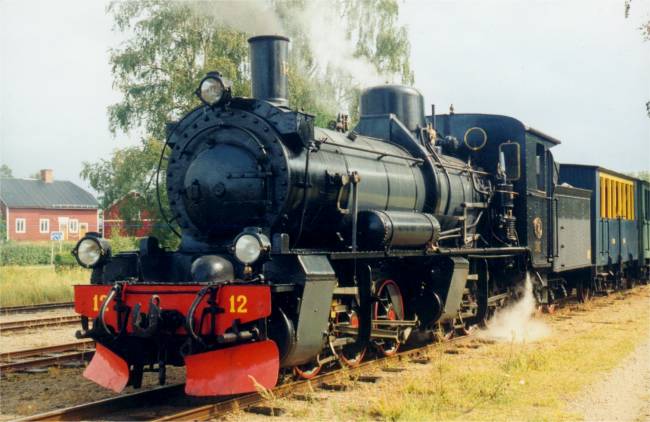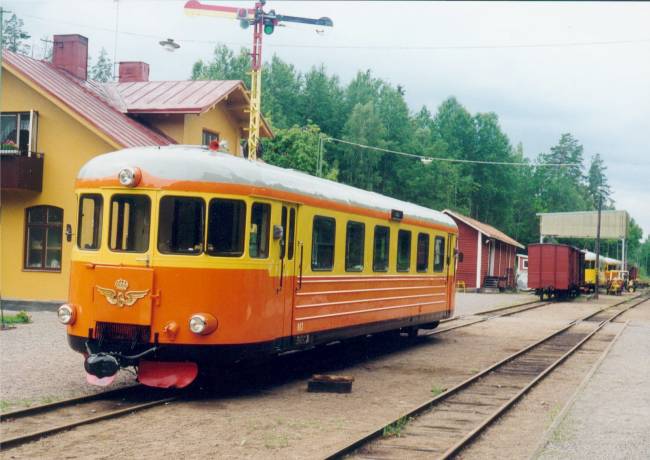Swedish Narrow Gauge

At the peak the public swedish railways covered a total of 16 886 km. A fairly high share of railway lines built in Sweden between 1870 and 1920 were narrow gauge lines, mostly with three foot gauge.
In total over the
years 18 064 km railway was built in Sweden, of which about 24 % was narrow
gauge of as much as nine different gauges.
Swedish Gauges
| Gauge (mm) | Note | Length (km) |
| 600 | Décauville | 197 |
| 693 | 28 swedish inches | 11 |
| 802 | 2,7 swedish feet | 222 |
| 891 | 3 swedish feet | 3024 |
| 1067 | 3,5 english feet | 604 |
| 1093 | exception due to an error | 62 |
| 1099 | 44 swedish inches (on the wheels) | 19 |
| 1188 | 4 swedish feet | 45 |
| 1217 | 4 english feet | 165 |
| 1435 | standard gauge | 13715 |
With Steam and Electricity
On the tracks of the swedish narrow gauge you find a great variation of rolling stock.... |
 |
...from small industrial steam engines on 600 mm track like RLJ 2 A Dahl at Risten-Lakviks Järnväg...Photo and © Per Nilsson |
...to large articulated steam engines (Mallet's) like DONJ 12, built to haul heavy timber trains on Dala-Ockelbo-Norrsundets Järnväg. The engine is now preserved at JTJ, Jädraås-Tallås Järnväg.Photo and © Per Nilsson |
SJ is Taking Over
All the narrow gauge lines were built by public companies with ownership widely spread among the public and the communities along the lines. However, in 1939 a law was passed in Sweden requiring all railways to be nationalized. The Swedish State Railways, SJ, started to acquire the first narrow gauge railways in 1940, but only bought those with 891 mm, 1067 mm and 1093 mm gauge. (Actually they already had acquired a few prior to the new law, but this was only to save these lines from bankruptcy). Eventually, in 1954, all 891 mm narrow gauge railways but three had been nationalized. The three remaining were Nordmark-Klarälvens Järnväg, NKlJ, Byvalla-Långshyttans Järnväg, BLJ, and Dala-Ockelbo-Norrsundets Järnväg, DONJ, all three with strong industries as owners.
SJ had a couple
of good years with lots of traffic during the second world war, but after
1945 traffic on the narrow gauge dropped quickly. The rolling stock was
also quite worn and in bad need for repair or replacement. SJ started to
invest in some rolling stock, including diesel motorized railcars and small
diesel locomotives. Even a few new steam engines were built for the 891
and 1067 mm tracks.
Railcars like this Yp DMU in Verkebäck were used all over the narrow gauge tracks of SJ in the 50-ies to the 80-ies. Photo and © Per Nilsson.
Starting in 1953,
many of the narrow gauge lines were converted to standard gauge. 420 km
of 891 mm track and 230 km of 1067 mm track was converted, the last line
as late as 1987.
The End...
For the remaining narrow gauge lines the decline accelerated in the 1960-ies, and more and more lines were abandoned. Busses were offered as compensation, but in many cases the decline continued and even the busses were removed. SJ stopped passenger operation on its last narrow gauge line from Växjö to Västervik (188 km) in 1984. Freight trains were run on the narrow gauge a few more years.Today the only narrow
gauge line still in daily service is "Roslagsbanan".
A few of the railways have also survived as preserved lines, such as Upsala-Lenna
Jernväg, ULJ.